Where Ecology Meets Art
By Tom PorterSituated ten miles off Maine’s midcoast, Monhegan Island is a fascinating place where ecological change and resilience is etched into the island’s landscape, said plant biologist Barry Logan.
Logan, who is Bowdoin’s Samuel S. Butcher Professor in the Natural Sciences and the McKeen Center senior faculty fellow, has been taking field trips to Monhegan for two decades now, drawn to the island by its fascinating ecological history and to document this change. “Much of the island’s original forest was cleared in the nineteenth century to make pasture for sheep farming,” he explained.
“This practice continued until near the turn of the twentieth century, when sheep farming became economically unsustainable on the island.” As happened elsewhere throughout New England, said Logan, much of the land was then abandoned, and trees began to grow back. On Monhegan that new growth was mainly white spruce.
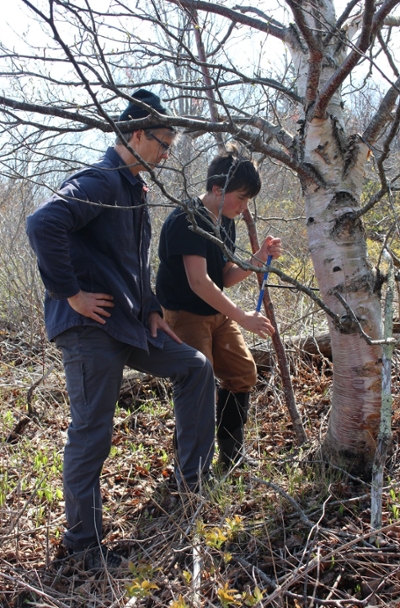
Thanks to the efforts over the years of Monhegan’s conservation-minded islanders (there is a small year-round population of around sixty-five, which swells severalfold in summer), the island was able to demonstrate its ecological resilience as it reverted to a more natural state. One particularly important figure, said Logan, was Theodore Edison—son of inventor and sound recording pioneer Thomas Edison—who purchased much of the land on Monhegan over several decades starting around 1930. In 1954 he set up a land trust to protect the island from further development.
Nevertheless, Monhegan has faced a number of ecological challenges over the years. “Deer were introduced in the 1950s for the islanders to hunt,” said Logan. “However, the deer population grew considerably. This caused problems, as the deer would eat a lot of vegetation, and more recently there were also concerns about the high risk of Lyme disease on the island.” In the 1990s, he explained, after much community debate, the decision was made to eradicate the deer population, which in turn shaped the patterns of forest change.
Another factor impacting the island’s ecology, said Logan, was the proliferation of the mistletoe parasite, which began to flourish as the population of white spruce, its primary host, grew. “With the removal of the deer, forest succession from declining white spruce was set in motion,” he explained, “and we began to see the emergence of broadleaf deciduous trees. Next to this dynamic forest reclaiming old pasture, we have the so-called Cathedral Woods, the portion of the island that was not cleared in the nineteenth century and where there are much older trees.”
Recently, Logan visited Monhegan Island to explore forest history and present-day ecology with students at the island’s one-room schoolhouse. The Monhegan School community includes three students, whose learning is supported by a teacher, an ed tech, and a school counselor. With Logan’s help, these students tested ideas about the history of their island’s forests.
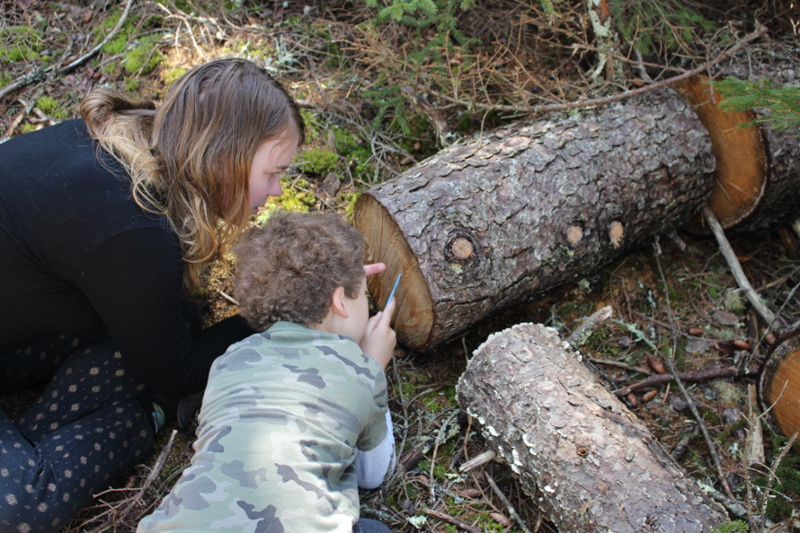
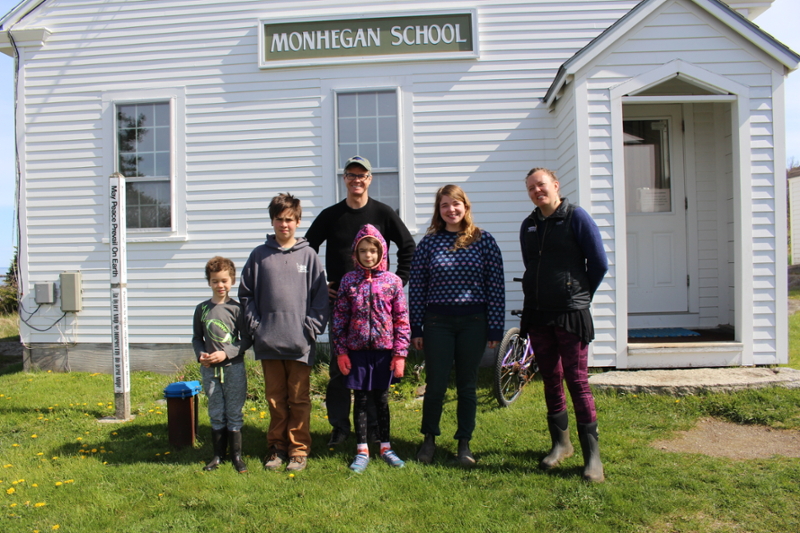



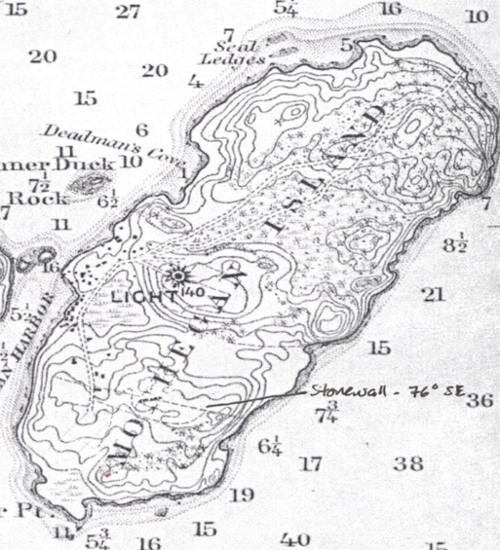
“If we understand that history properly, then broadleafed trees on old pasture should be no more than twenty-three years old, as this is after the removal of the deer, who were browsing seedlings to oblivion,” Logan explained. Tree age can be discerned by counting annual rings of cores extracted from the trunks. “Tree coring remains an essential tool in forest ecology; it’s science that can be performed by school kids with a little support.” Logan spent several days on the island with students and teachers extracting cores and discussing the project. “I greatly enjoy working with the Monhegan School community; students are dynamic, supportive of each other, and impressively knowledgeable about their island,” Logan added. “Tree cores are in their hands now; I’m looking forward to learning what they discover.”
An Artistic Collaboration
Logan hopes to incorporate this tree-ring work into a larger collaborative project depicting change on Monhegan Island. The project draws deeply on Monhegan’s longstanding artistic tradition. “Some of nation’s finest landscape painters have portrayed the island, and it occurred to me that these artists, through their work, may be able to inform the work of scientists such as myself.” Logan got in touch with Frank Goodyear, who codirects the Bowdoin College Museum of Art, and the two agreed to collaborate on an exhibition highlighting how artists have documented, and are still documenting, the ecological change that has occurred on the island.
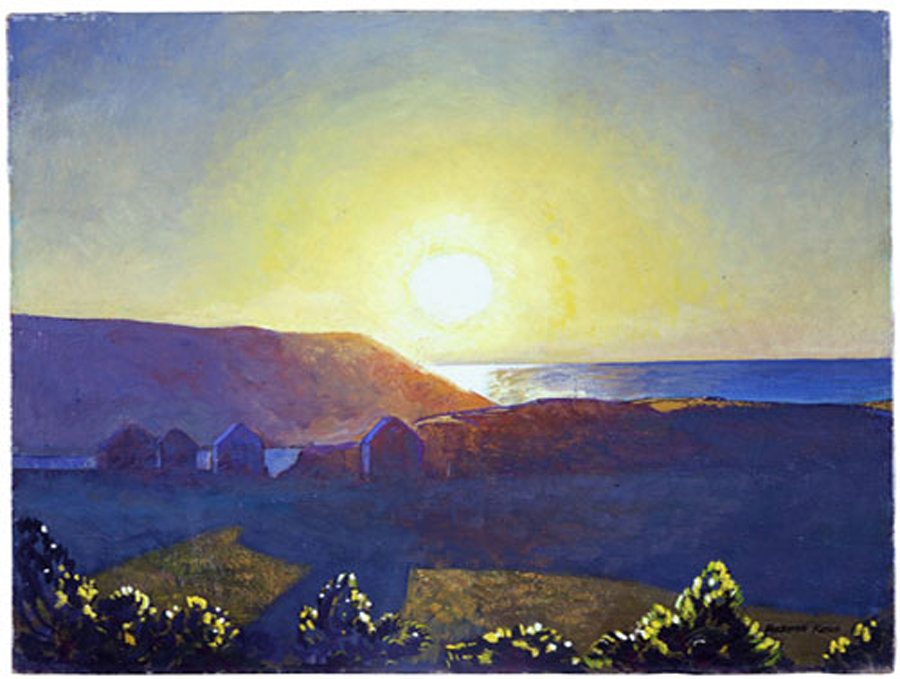
“When Barry reached out about collaborating, we began discussing an exhibition that combines art and science,” explained Goodyear. “Alongside works of art we plan to include scientific illustrations, charts, maps (some of them dating back to the sixteenth century), graphs, and scientific equipment.
“Monhegan has been popular with many important painters and photographers, including Rockwell Kent, Leon Kroll, and Alice Kent Stoddard,” he said, “and the museum owns notable examples of their work.” As well as featuring the museum’s own collection, Goodyear said it will also borrow other works for the show. “Additionally, we have commissioned photographer Accra Shepp to visit the island and create a series of images for the exhibition.”
“Some of nation’s finest landscape painters have portrayed the island, and it occurred to me that these artists, through their work, may be able to inform the work of scientists such as myself.” Samuel S. Butcher Professor in the Natural Sciences Barry Logan.
American artists began visiting Monhegan during the second half of the nineteenth century, said Goodyear. “If you’ve ever visited the island you will understand why. It’s not a terribly large place, just less than a square mile, but it’s one of the most beautiful spots I’ve ever seen. If you walk over to the eastern side, there are these imposing cliffs rising out of the ocean. As you look out from there, the next stop is Europe.”
The exhibition is due to open in December 2024 at the Bowdoin College Museum of Art, where it will run until June 2025.